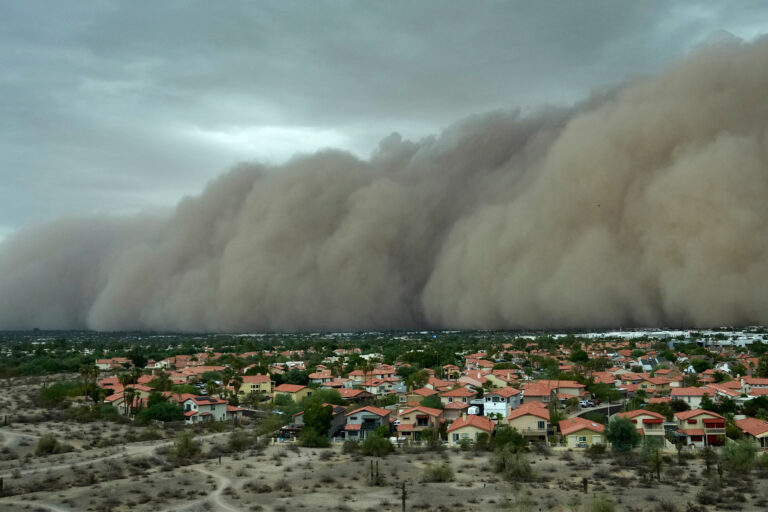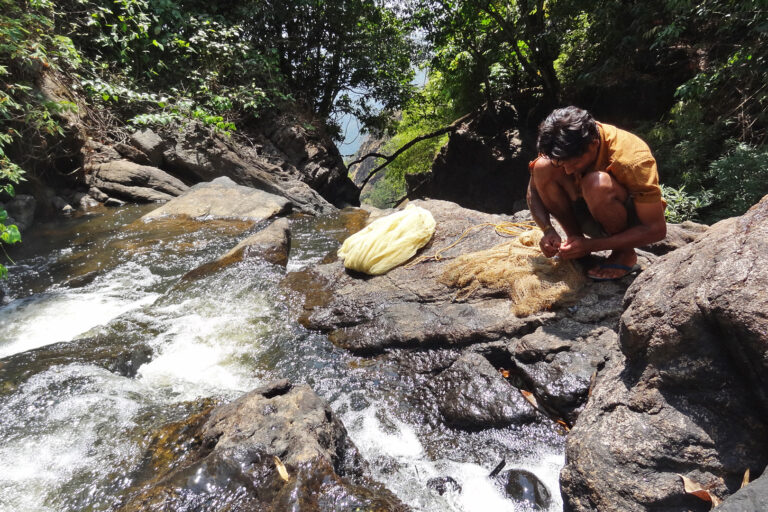- A Malaysian court ruled this week that hydropower companies building a dam on land belonging to the Indigenous Semai people of Malaysia’s Perak state had failed to secure proper consent and must halt operations immediately.
- The court also ruled that the state and federal governments, and the federal agency tasked with overseeing Indigenous affairs, had failed in their duty to protect Indigenous land from encroachment.
- Activists expressed relief and elation at the verdict, which marks a major milestone for land rights for Malaysia’s Indigenous peoples, known collectively as Orang Asal.
- The verdict can still be appealed.
The Indigenous Semai tribe in Malaysia have achieved a significant legal victory in their long-running battle to protect their ancestral land from the impacts of a hydroelectric dam project.
The high court in Malaysia’s Perak state ruled on Monday that the dam developers had failed to properly consult with or gain the consent of the Semai before beginning construction on their land in the village, or kampung, of Ulu Geruntum, in the town of Gopeng.
Bhupindar Singh, the presiding judge, ordered the companies — Perak Hydro Renewable Energy Corporation (PHREC) and Conso Hydro RE — to halt all operations immediately and to vacate the area and remove all equipment within 30 days.
This ruling is a major milestone for Indigenous land rights in Malaysia, where such projects frequently conflict with the rights and traditions of Indigenous communities.
Goik Kenzin, the lawyer for the developers, said, “We expect our clients and the state and federal [governments] to appeal but no confirmation yet.”

Malaysia’s Indigenous peoples, known collectively as the Orang Asal, make up about 11% of the country’s population. Those in Peninsular Malaysia, called the Orang Asli, comprise just 0.7% of the population, and have historically struggled to safeguard their customary lands against encroachment by both state-backed and private development initiatives.
The court’s decision comes after years of legal battles, with Orang Asli villagers from six settlements — Kampung Sungai Kapor, Kampung Sat, Kampung Ulu Kepayang, Kampung Empang Main, Kampung Poh and Kampung Ulu Geruntum — filing a lawsuit in 2018 against the companies, the Perak state government, the Perak Land and Mines Office, the federal government, and the Orang Asli Development Department (Jakoa).
The plaintiffs argued that the dam project, which began in 2012, was undertaken without their consent, thus violating their rights to their ancestral land. They also said the project had caused significant environmental and cultural harm, including the destruction of grave sites, the pollution of their river, and the felling of half their fruit trees.
Before turning to the courts, the villagers staged human barricades to prevent machinery from operating on their land.
In April 2021, the high court in Ipoh, the Perak state capital, issued an interlocutory injunction against the two companies and their representatives, halting their activities while the main case was ongoing. However, this injunction was overturned by a court of appeal in April 2022.
A federal court later granted the Orang Asli permission to appeal in May 2023, and by September 2023 the Ipoh High Court issued an order for the two companies to cease their dam construction project.
One year on, the court has ruled that the state and federal governments, as well as Jakoa, had failed in their fiduciary duty to protect Orang Asli land from encroachment.
Bhupindar ordered the two companies, the state government, the state land and mines department, the federal government and the Jakoa director-general to pay a combined total of 75,000 ringgit ($17,300) in costs.
Additionally, the Orang Asli were awarded nominal compensation of 10,000 ringgit ($2,300) for the destruction of grave sites and 10,000 ringgit for the loss of their trees.
Perak’s rich network of rivers has spurred numerous small-scale hydroelectric projects, including the one in Ulu Geruntum. The state is set to host 31 mini hydro projects developed by PHREC, driven by Malaysia’s goal to derive 31% of its energy from renewable sources by 2025.

The court’s decision, while seen as a triumph, is also viewed as a crucial test for the broader implications of Indigenous land rights in Malaysia.
Cyren Wong, an ethnologist familiar with the case, welcomed the ruling with cautious optimism. “The opposition … to the hydro dam was an uphill battle, but this outcome is a testament to the resilience, perseverance, and dedication of the Ulu Geruntum community.”
Having spent some time among the villagers for his research, Wong said he witnessed the project’s disruptive impact firsthand on local communities, ecosystems, and the plants and animals dependent on the natural landscape for survival.
While the court’s decision marks a significant victory, Wong said he remains cautious about its broader implications for Indigenous land rights in Malaysia. “I am doubtful that this one victory will completely overhaul the systemic injustice faced by many Orang Asal communities,” he said, adding there remains a lack of representation for Indigenous voices in decisions that impact their lives.
However, he said he believes the case sets a key precedent. “It’s an important symbol that will hopefully empower other Indigenous communities to pursue justice for their land and livelihoods.”
Back in Gopeng, Orang Asli Semai Ulu Geruntum Action Committee member Pesenang Bah Singgong, known as Wah Sona in her village, expressed relief and elation at the court’s decision.
“Our feelings yesterday were like we couldn’t believe that we had won,” she said. “Then when the lawyer announced it again, only God knows how happy we were.”
Having been involved in the court case from the beginning, Wah Sona said she hopes the ruling will have a lasting impact. “This victory belongs to all of us,” she said.
“The important change we seek is the official gazettement of our customary land so that it is not disturbed.”
FEEDBACK: Use this form to send a message to the author of this post. If you want to post a public comment, you can do that at the bottom of the page.













